-
 Bitcoin
Bitcoin $104,553.9735
2.64% -
 Ethereum
Ethereum $2,496.7774
-1.03% -
 Tether USDt
Tether USDt $1.0006
0.04% -
 XRP
XRP $2.1700
2.04% -
 BNB
BNB $645.3079
0.07% -
 Solana
Solana $149.3764
2.55% -
 USDC
USDC $0.9998
0.00% -
 Dogecoin
Dogecoin $0.1799
4.11% -
 TRON
TRON $0.2773
1.97% -
 Cardano
Cardano $0.6636
2.90% -
 Hyperliquid
Hyperliquid $34.1236
2.37% -
 Sui
Sui $3.1781
6.52% -
 Chainlink
Chainlink $13.5021
2.04% -
 UNUS SED LEO
UNUS SED LEO $8.9482
3.57% -
 Stellar
Stellar $0.2634
1.23% -
 Avalanche
Avalanche $19.4757
0.91% -
 Bitcoin Cash
Bitcoin Cash $396.2879
0.72% -
 Toncoin
Toncoin $3.1452
-0.45% -
 Shiba Inu
Shiba Inu $0.0...01249
1.83% -
 Hedera
Hedera $0.1646
1.65% -
 Litecoin
Litecoin $86.8679
1.63% -
 Polkadot
Polkadot $3.8977
0.65% -
 Monero
Monero $325.3655
4.09% -
 Ethena USDe
Ethena USDe $1.0013
0.04% -
 Bitget Token
Bitget Token $4.5948
0.53% -
 Dai
Dai $0.9998
0.00% -
 Pepe
Pepe $0.0...01107
1.87% -
 Pi
Pi $0.6230
2.38% -
 Aave
Aave $252.5157
0.31% -
 Uniswap
Uniswap $6.0747
-0.47%
How many days are used for dynamic fluctuation channel? Short-term trading parameters
Dynamic fluctuation channels for short-term crypto trading typically use 5 to 20 days, with entry/exit points based on channel boundaries and adjusted for market volatility.
Jun 04, 2025 at 10:56 pm
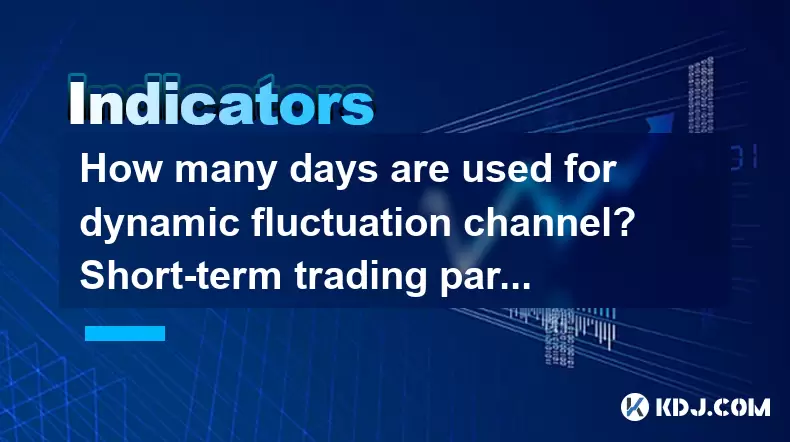
How many days are used for dynamic fluctuation channel? Short-term trading parameters
In the realm of cryptocurrency trading, understanding and effectively utilizing various technical analysis tools can significantly enhance a trader's ability to make informed decisions. One such tool is the dynamic fluctuation channel, which is pivotal for short-term trading strategies. This article delves into the specifics of how many days are typically used for a dynamic fluctuation channel and explores the key parameters for short-term trading.
Understanding Dynamic Fluctuation Channels
A dynamic fluctuation channel is a technical analysis tool used to identify potential price movements within a certain timeframe. It is typically constructed using moving averages or other indicators to create upper and lower boundaries that the price of an asset is expected to fluctuate between. The number of days used to set up this channel can vary depending on the trader's strategy and the specific market conditions. For short-term trading, the most commonly used period ranges from 5 to 20 days.
Setting Up a Dynamic Fluctuation Channel
To set up a dynamic fluctuation channel for short-term trading, traders often use a moving average to establish the center line of the channel. Here's how to do it:
- Choose the time frame: Decide whether you want to use a 5-day, 10-day, or 20-day moving average based on your trading strategy.
- Select the moving average type: Common choices include simple moving average (SMA) or exponential moving average (EMA).
- Calculate the moving average: Use the selected time frame to calculate the moving average of the asset's price.
- Establish the channel: Create upper and lower boundaries by adding and subtracting a certain percentage or standard deviation from the moving average. For instance, a common approach is to add and subtract two standard deviations from the moving average to form the channel boundaries.
Short-term Trading Parameters
Short-term trading in the cryptocurrency market requires a keen understanding of various parameters that can influence trading decisions. Some of the critical parameters include entry and exit points, stop-loss levels, and take-profit targets.
- Entry Points: Traders often look for price touches or breakouts of the dynamic fluctuation channel to determine entry points. For instance, if the price touches the lower boundary of the channel, it might be a signal to enter a long position.
- Exit Points: Similarly, the upper boundary can serve as an exit point for long positions. Traders might exit their positions when the price touches or breaks through the upper boundary.
- Stop-Loss Levels: To manage risk, traders set stop-loss orders just below the lower boundary of the channel. This helps limit potential losses if the price breaks down.
- Take-Profit Targets: Profit targets can be set at the upper boundary of the channel or at a predetermined percentage above the entry point.
Adjusting the Channel for Market Volatility
Market volatility can significantly impact the effectiveness of a dynamic fluctuation channel. Traders need to adjust the channel's parameters based on the current market conditions. For instance, during periods of high volatility, a wider channel might be necessary to account for larger price swings. Conversely, in a less volatile market, a narrower channel could be more appropriate.
- Assess Market Volatility: Use indicators like the Average True Range (ATR) to gauge the market's volatility.
- Adjust the Channel Width: Increase or decrease the percentage or standard deviation used to create the channel boundaries based on the ATR.
- Monitor and Reassess: Continuously monitor the market and reassess the channel's effectiveness, making adjustments as needed.
Combining Dynamic Fluctuation Channels with Other Indicators
While dynamic fluctuation channels are powerful tools on their own, combining them with other technical indicators can enhance a trader's strategy. Popular indicators to use in conjunction with dynamic fluctuation channels include the Relative Strength Index (RSI), Moving Average Convergence Divergence (MACD), and Bollinger Bands.
- RSI: Use the RSI to identify overbought or oversold conditions. When the price touches the lower boundary of the channel and the RSI indicates oversold conditions, it could be a strong buy signal.
- MACD: The MACD can help confirm trend direction and momentum. A bullish crossover of the MACD line above the signal line, coupled with the price touching the lower channel boundary, can reinforce a long entry.
- Bollinger Bands: Bollinger Bands can be used to confirm the channel's boundaries. If the price touches the lower Bollinger Band and the lower boundary of the dynamic fluctuation channel simultaneously, it might indicate a strong support level.
Practical Application in Cryptocurrency Trading
Applying dynamic fluctuation channels in the cryptocurrency market involves careful analysis and strategic execution. Let's consider a practical example using Bitcoin (BTC) and a 10-day dynamic fluctuation channel.
- Set Up the Channel: Calculate the 10-day SMA of Bitcoin's price and create the channel boundaries using two standard deviations.
- Analyze the Chart: Monitor the price action as it interacts with the channel boundaries. If Bitcoin's price touches the lower boundary, assess other indicators like the RSI and MACD for additional confirmation.
- Execute Trades: Enter a long position when the price touches the lower boundary and other indicators align. Set a stop-loss just below the lower boundary and a take-profit target at the upper boundary.
- Monitor and Adjust: Continuously monitor the trade and adjust the channel parameters if market conditions change. For instance, if volatility increases, widen the channel to accommodate larger price swings.
Frequently Asked Questions
Q1: Can dynamic fluctuation channels be used for long-term trading?
Yes, dynamic fluctuation channels can be adapted for long-term trading by using longer time frames, such as 50-day or 200-day moving averages. However, the parameters and strategy would need to be adjusted to suit the slower pace of long-term market movements.
Q2: How do I know if my dynamic fluctuation channel is set up correctly?
To ensure your dynamic fluctuation channel is set up correctly, monitor how well it captures the price action. The price should generally stay within the channel boundaries, with occasional breakouts. If the price frequently breaks out or stays outside the channel, you may need to adjust the time frame or the method used to calculate the boundaries.
Q3: Are there any specific cryptocurrencies that work better with dynamic fluctuation channels?
Dynamic fluctuation channels can be applied to any cryptocurrency. However, they tend to be more effective with cryptocurrencies that have higher liquidity and trading volume, such as Bitcoin and Ethereum, due to the smoother price action and more reliable data.
Q4: What are the risks associated with using dynamic fluctuation channels for short-term trading?
The primary risks include false signals and market volatility. False signals can lead to losses if the price breaks out of the channel unexpectedly. Additionally, high market volatility can cause the channel to become less reliable, necessitating frequent adjustments to the channel parameters.
Disclaimer:info@kdj.com
The information provided is not trading advice. kdj.com does not assume any responsibility for any investments made based on the information provided in this article. Cryptocurrencies are highly volatile and it is highly recommended that you invest with caution after thorough research!
If you believe that the content used on this website infringes your copyright, please contact us immediately (info@kdj.com) and we will delete it promptly.
- PEPE Price Prediction 2025: Could PEPE Coin (PEPE) Reach $0.000045?
- 2025-06-07 03:10:18
- Smarter Move for May 2025? All Answers Lie Under Web3 ai's $0.0003 Presale Price, While LTC Surges & DOGE Dips
- 2025-06-07 03:10:18
- Pepe Coin (PEPE) Jumps 9% After the Federal Reserve Decided to Keep Interest Rates Unchanged
- 2025-06-07 03:10:18
- Altcoins Like Ethereum (ETH), Solana (SOL), Dogecoin (DOGE), and NEAR Are Breaking Out, Signalling the Start of a New Cycle
- 2025-06-07 03:10:18
- Coinbase Releases Internal SEC Documents Exposing Conflicting Communications on ETH and XRP
- 2025-06-07 03:00:13
- US President Donald Trump-backed World Liberty Financial's (WLFI) stablecoin is making its way to the tally of the biggest cryptos in the market.
- 2025-06-07 03:00:12
Related knowledge
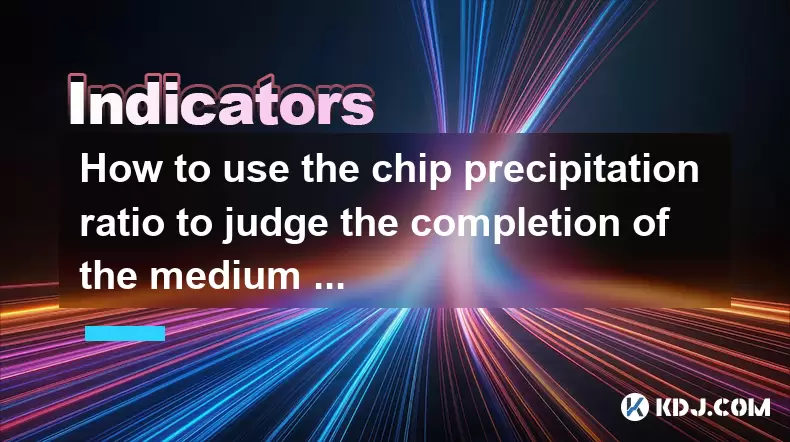
How to use the chip precipitation ratio to judge the completion of the medium and long-term bottom construction?
Jun 04,2025 at 03:36am
The chip precipitation ratio is a crucial metric used by investors to assess the accumulation of chips (or shares) at different price levels over time. This ratio helps in understanding the distribution of chips and can be a powerful tool for determining the completion of medium and long-term bottom construction in the cryptocurrency market. By analyzin...
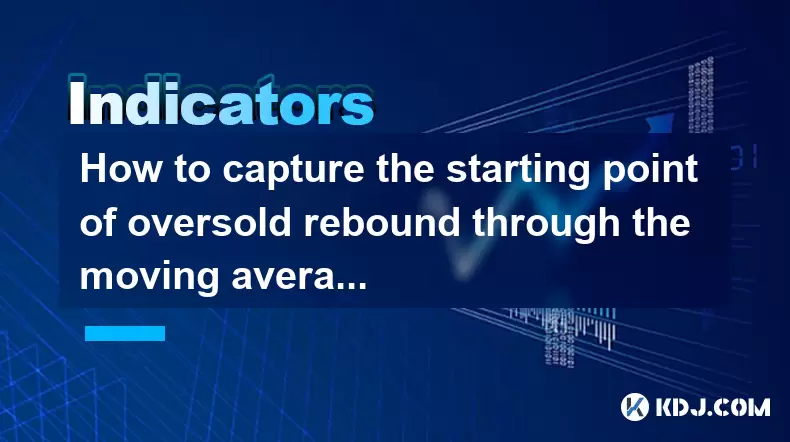
How to capture the starting point of oversold rebound through the moving average gravity reversal strategy?
Jun 04,2025 at 01:01pm
The moving average gravity reversal strategy is a sophisticated approach used by traders to identify potential entry points for buying cryptocurrencies when they are considered oversold. This strategy leverages the concept of moving averages to pinpoint moments when a cryptocurrency might be poised for a rebound. In this article, we will delve into the ...
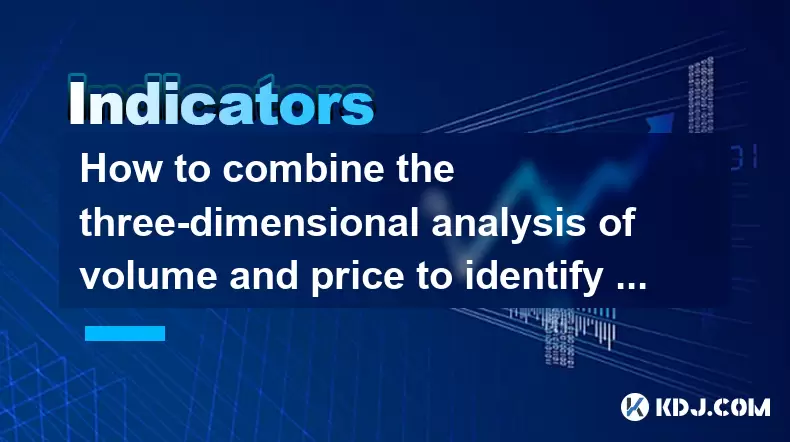
How to combine the three-dimensional analysis of volume and price to identify the golden buying point of breakthrough and retracement?
Jun 03,2025 at 11:42pm
In the dynamic world of cryptocurrencies, identifying the optimal buying points is crucial for maximizing profits and minimizing risks. One effective method to achieve this is by combining three-dimensional analysis of volume and price to pinpoint the golden buying points during breakouts and retracements. This article will delve into how to use this ap...
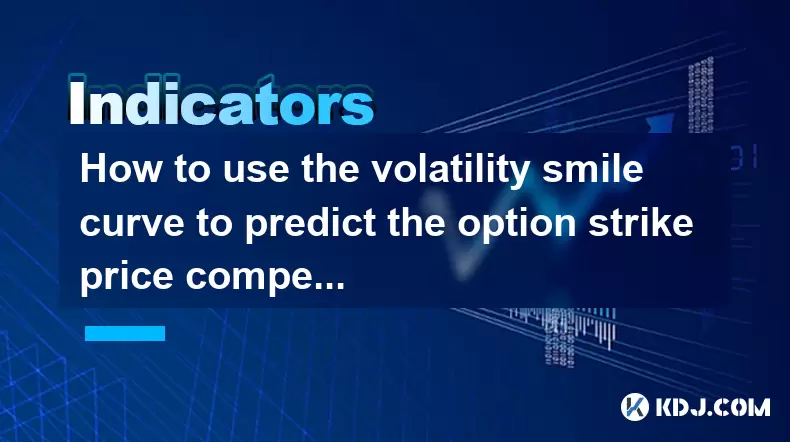
How to use the volatility smile curve to predict the option strike price competition area?
Jun 06,2025 at 01:01pm
The volatility smile curve is a graphical representation that shows the implied volatility of options across different strike prices for a given expiration date. It is called a 'smile' because the curve often takes the shape of a smile, with higher implied volatilities for options that are deep in-the-money or deep out-of-the-money, and lower implied vo...
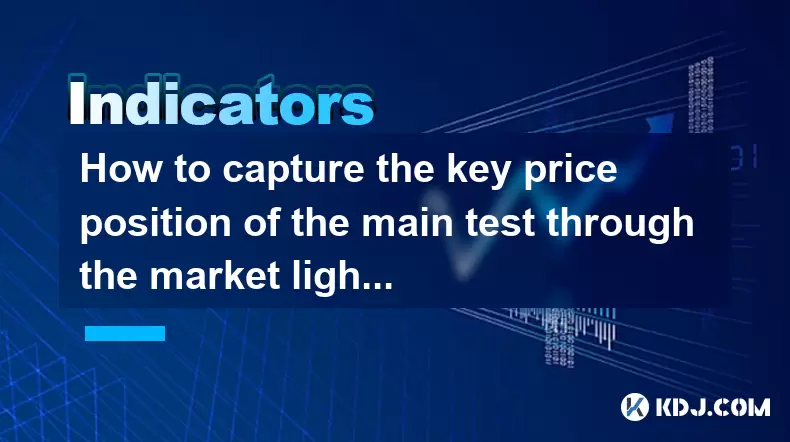
How to capture the key price position of the main test through the market lightning chart?
Jun 02,2025 at 06:07pm
Introduction to Market Lightning ChartThe market lightning chart is a powerful tool used by cryptocurrency traders to visualize price movements and identify key price positions. This chart type provides a detailed view of market activity, allowing traders to spot trends, reversals, and other significant price levels quickly. By understanding how to use ...
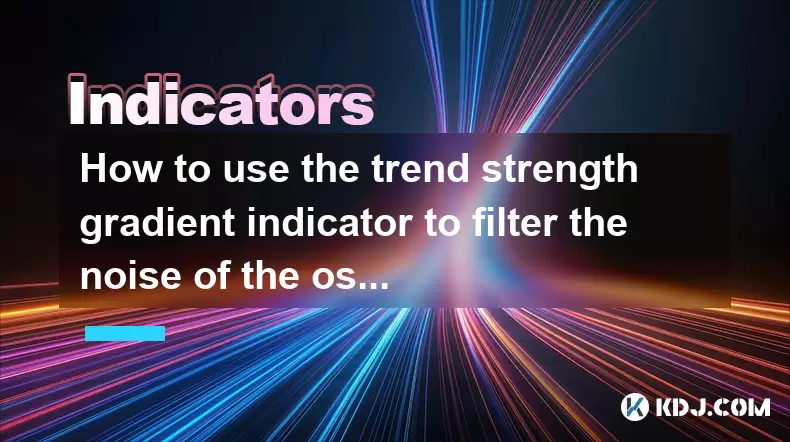
How to use the trend strength gradient indicator to filter the noise of the oscillating market?
Jun 06,2025 at 06:15pm
The trend strength gradient indicator is a powerful tool used by cryptocurrency traders to analyze market trends and filter out the noise that often accompanies oscillating markets. This indicator helps traders identify the strength of a trend, enabling them to make more informed decisions. In this article, we will explore how to effectively use the tre...

How to use the chip precipitation ratio to judge the completion of the medium and long-term bottom construction?
Jun 04,2025 at 03:36am
The chip precipitation ratio is a crucial metric used by investors to assess the accumulation of chips (or shares) at different price levels over time. This ratio helps in understanding the distribution of chips and can be a powerful tool for determining the completion of medium and long-term bottom construction in the cryptocurrency market. By analyzin...

How to capture the starting point of oversold rebound through the moving average gravity reversal strategy?
Jun 04,2025 at 01:01pm
The moving average gravity reversal strategy is a sophisticated approach used by traders to identify potential entry points for buying cryptocurrencies when they are considered oversold. This strategy leverages the concept of moving averages to pinpoint moments when a cryptocurrency might be poised for a rebound. In this article, we will delve into the ...

How to combine the three-dimensional analysis of volume and price to identify the golden buying point of breakthrough and retracement?
Jun 03,2025 at 11:42pm
In the dynamic world of cryptocurrencies, identifying the optimal buying points is crucial for maximizing profits and minimizing risks. One effective method to achieve this is by combining three-dimensional analysis of volume and price to pinpoint the golden buying points during breakouts and retracements. This article will delve into how to use this ap...

How to use the volatility smile curve to predict the option strike price competition area?
Jun 06,2025 at 01:01pm
The volatility smile curve is a graphical representation that shows the implied volatility of options across different strike prices for a given expiration date. It is called a 'smile' because the curve often takes the shape of a smile, with higher implied volatilities for options that are deep in-the-money or deep out-of-the-money, and lower implied vo...

How to capture the key price position of the main test through the market lightning chart?
Jun 02,2025 at 06:07pm
Introduction to Market Lightning ChartThe market lightning chart is a powerful tool used by cryptocurrency traders to visualize price movements and identify key price positions. This chart type provides a detailed view of market activity, allowing traders to spot trends, reversals, and other significant price levels quickly. By understanding how to use ...

How to use the trend strength gradient indicator to filter the noise of the oscillating market?
Jun 06,2025 at 06:15pm
The trend strength gradient indicator is a powerful tool used by cryptocurrency traders to analyze market trends and filter out the noise that often accompanies oscillating markets. This indicator helps traders identify the strength of a trend, enabling them to make more informed decisions. In this article, we will explore how to effectively use the tre...
See all articles

























































































